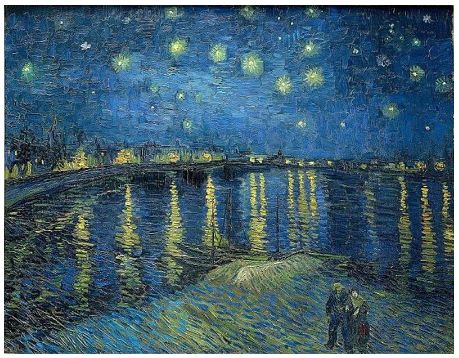Having established that generative AI is not like a human in conversation, this week, I look 'bottom-up' to evaluate it on its own terms.
The previous articles in my "Meaningful dialogue after ChatGPT" series provide context to this particular conversation, with links to them at the bottom of this third chapter.
German philosopher Gadamer encouraged us to embrace the "otherness of the other", by which he meant diverse human dialogue partners. I am taking the liberty of stretching his idea to cover generative AI, which I believe remains in the spirit of his work.
What is the "otherness" of generative AI?
Generative AI has some big advantages over people in conversation through its advanced content manipulation abilities.
GPT-4 has only 45 gigabytes of data, a fraction of the 2.5 petabytes stored in the human brain, but its speed and accuracy of retrieval mean that, in practice, it has more knowledge at its immediate disposal than we do.
In addition, its facility with images, code, music, and multiple languages provides a rich multimedia experience. Generative AI can also move quickly between forms and styles to mimic different genres (it won't sing – I asked it to).
Another aspect of "otherness" is its virtual form. Generative AI is less constrained by space and time than humans and can participate in millions of simultaneous conversations hosted by a single platform. This digital existence does not preclude generative AI from acting in the material world because it can also be embedded in physical systems – most obviously, to create robots.
Generative AI as art
The multimedia capabilities of generative AI relate most closely to Gadamer's ideas about art. He suggests humans have a "to-and-fro" experience of art akin to "play", in which they experience the work as some kind of "performance". It doesn't take much imagination to see similarities to an interaction with generative AI. However, Gadamer's criteria for this kind of experience to have significance is that it changes us – a high bar.
Following this thread, I prompted ChatGPT to use its DALL.E 3 capability to produce an image to "make me a better person". It produced Figure 1 below, explaining:
Here's an image that might inspire you to be a better person. It depicts a scene of support and perseverance, where one person is helping another up a steep hill at sunrise. This act symbolises the positive impact we can have on others through kindness and assistance.

Figure 1
To me, this image seemed a bit "Enid Blyton", so I requested that the style be altered to that of Vincent Van Gogh. It produced Figure 2 in seconds, explaining:
I've transformed the image into a style reminiscent of Vincent Van Gogh, complete with expressive, swirling brushstrokes and vibrant colours.

Figure 2
As a technical feat, this was impressive, and I think the image has more impact, albeit short of something truly transformational.
However, in my opinion, which I concede is subjective, the actual Van Gogh in Figure 3 conveys more meaning through the small impressionistic figures alone than anything ChatGPT produced. This impact was further evidenced by a recent immersive experience of the Impressionists I attended in Canada, after which many in the audience were visibly moved, some even embracing strangers afterwards (not me).

Figure 3
But do Gadamer's ideas only apply to art? Are there other experiences that generative AI might facilitate that are equally transformational? I believe there are.
Generative AI as therapist and debater
A recent article in the New Scientist notes that some people now prefer to receive therapy from generative AI, even when they know it is not human. Its responses were preferred even to crisis line workers. In my view, this qualifies as an experience that changes us.
Similarly, the Swiss Federal Institute of Technology found that GPT-4 was 80%+ more persuasive in convincing 820 volunteers to accept one side of a debate than a human. This is partly because it has more data at its disposal from which to build the strongest arguments, using patterns inherent in its language model (aka mimicry). Conversely, some see its lack of emotion, opinion, and moral perspective as a form of welcome objectivity.
Conclusion
While generative AI may have failed to move me with its art, crossing the threshold into therapy and debate enhances generative AI's impact on things that matter to humans. That has made some want to distinguish it from mere tools or programs by affording its terms like "artificial entityhood". This trend will only gain momentum.
Next week, I will examine how generative AI behaves like a giant book and whether it can put new questions in our heads.
There is an academic version of this material available, but it is a tough read. It can be found here.
The content of this article is intended to provide a general guide to the subject matter. Specialist advice should be sought about your specific circumstances.

